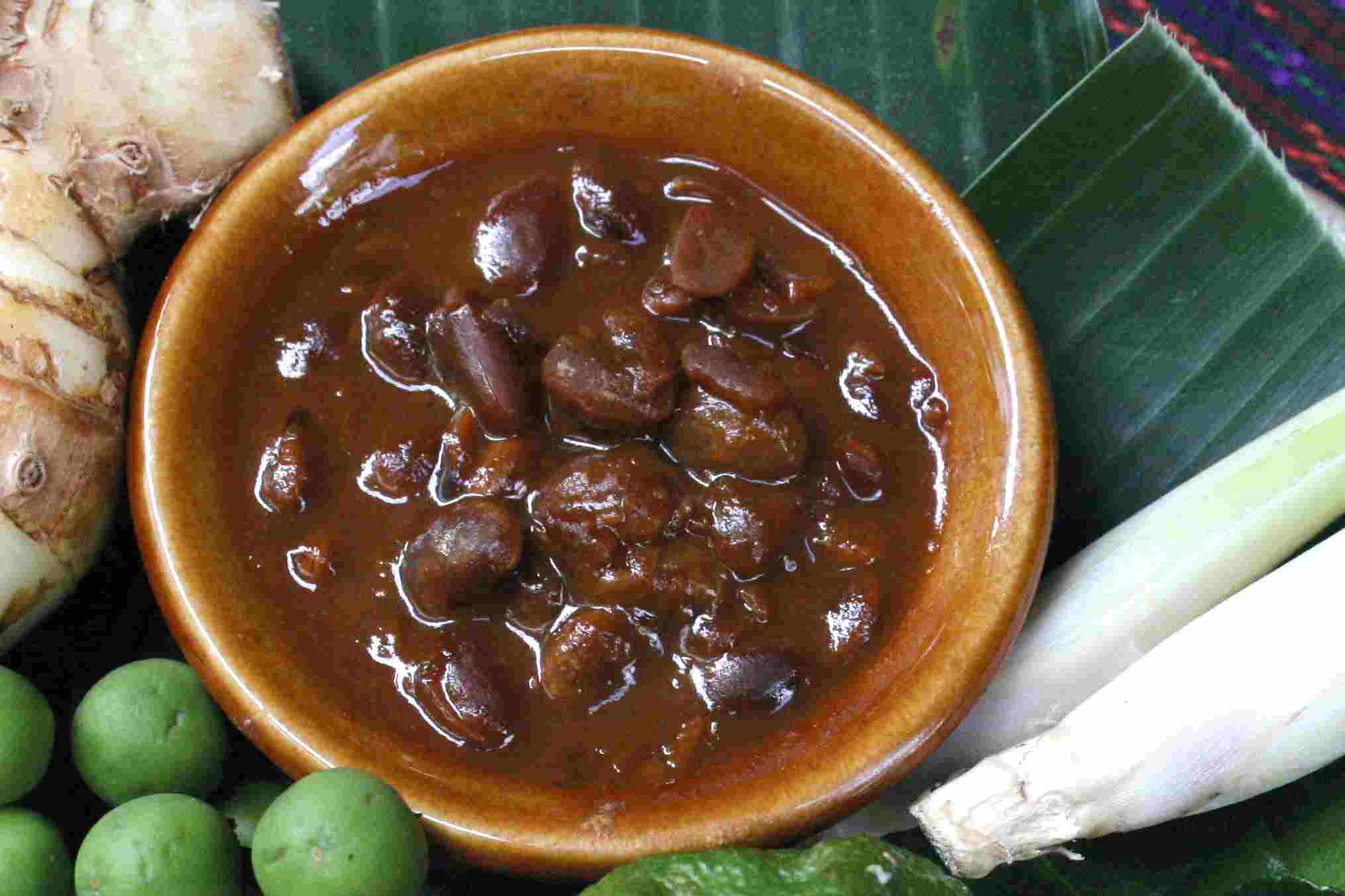
Miso is a traditional Japanese seasoning produced by fermenting rice, barley, and/or soybeans, with salt and the fungus kōjikin, the most typical miso being made with soy. The result is a thick paste used for sauces and spreads and pickling vegetables, and mixing with dashi soup stock to serve as miso soup. The predecessor of miso originated in China during the 3rd century BC or earlier, and it is probable that this, together with related fermented soy-based foods, was introduced to Japan at the same time as Buddhism in the 6th century AD. Until the Muromachi era, miso was made without grinding the soybeans. In the Kamakura era, a common meal was made up of a bowl of rice, some dried fish, a serving of miso, and a fresh vegetable. In the Muromachi era, Buddhist monks discovered that soybeans could be ground into a paste, spawning new cooking methods where miso was used to flavor other foods.
Miso is a paste made from fermented soybeans or other grains, such as rice or barley. It is commonly used in Japanese cuisine and is known for its unique and complex flavor profile. Miso has been enjoyed in Japan for centuries and has recently gained popularity in the Western world as a flavorful and healthy ingredient.
There are several different types of miso, each with a distinct flavor and color. The most common types of miso include red miso, white miso, and yellow miso.
Red Miso - This type of miso has a strong flavor and a deep red color. It is made with more soybeans and is fermented for a longer period of time, giving it a more complex flavor. It is commonly used in hearty soups, stews, and marinades.
White Miso - White miso is made with less soybeans and more rice or barley. It has a milder flavor and a light beige color. It is often used in lighter soups, dressings, and dips.
Yellow Miso - Yellow miso is the mildest type of miso and is made with equal parts soybeans and grains. It has a light yellow color and a sweet, mild flavor. It is commonly used in soups and dressings.
Miso is known for its many health benefits. It is a good source of protein, fiber, and essential vitamins and minerals. Some of the other benefits of miso include:
1. Promotes Digestion - Miso is rich in probiotics, which can help improve gut health and promote digestion.
2. Boosts Immune System - Miso contains antioxidants that can help boost the immune system and protect against diseases.
3. Lowers Cholesterol - Miso has been shown to help lower cholesterol levels, reducing the risk of heart disease.
4. Prevents Cancer - Some studies suggest that miso may help prevent certain types of cancer, such as breast and colon cancer.
Miso can be used in a variety of ways in cooking, adding depth and flavor to many dishes. Some popular uses of miso include:
1. Soup - Miso soup is a staple in Japanese cuisine. It is made by dissolving miso paste in hot water and adding ingredients such as tofu, seaweed, or vegetables. It is a light and comforting soup that is perfect for cold winter days.
2. Marinade - Miso can be used as a marinade for meats such as chicken, beef, or fish. It adds a savory depth of flavor to the meat and helps to tenderize it.
3. Dressing - Miso can be used as a base for salad dressings. It adds a rich umami flavor and pairs well with ingredients such as sesame oil, rice vinegar, or honey.
4. Dip - Miso can be used as a dip for vegetables, crackers, or bread. It makes for a delicious and healthy snack that is packed with nutrients.
Miso is a versatile and delicious ingredient that has many health benefits. It is a staple in Japanese cuisine, but has gained popularity in the Western world in recent years. With its unique flavor profile and numerous uses, miso is a must-have for any home cook. Whether you are making soup, marinades, dressings, or dips, miso adds depth and flavor to any dish.